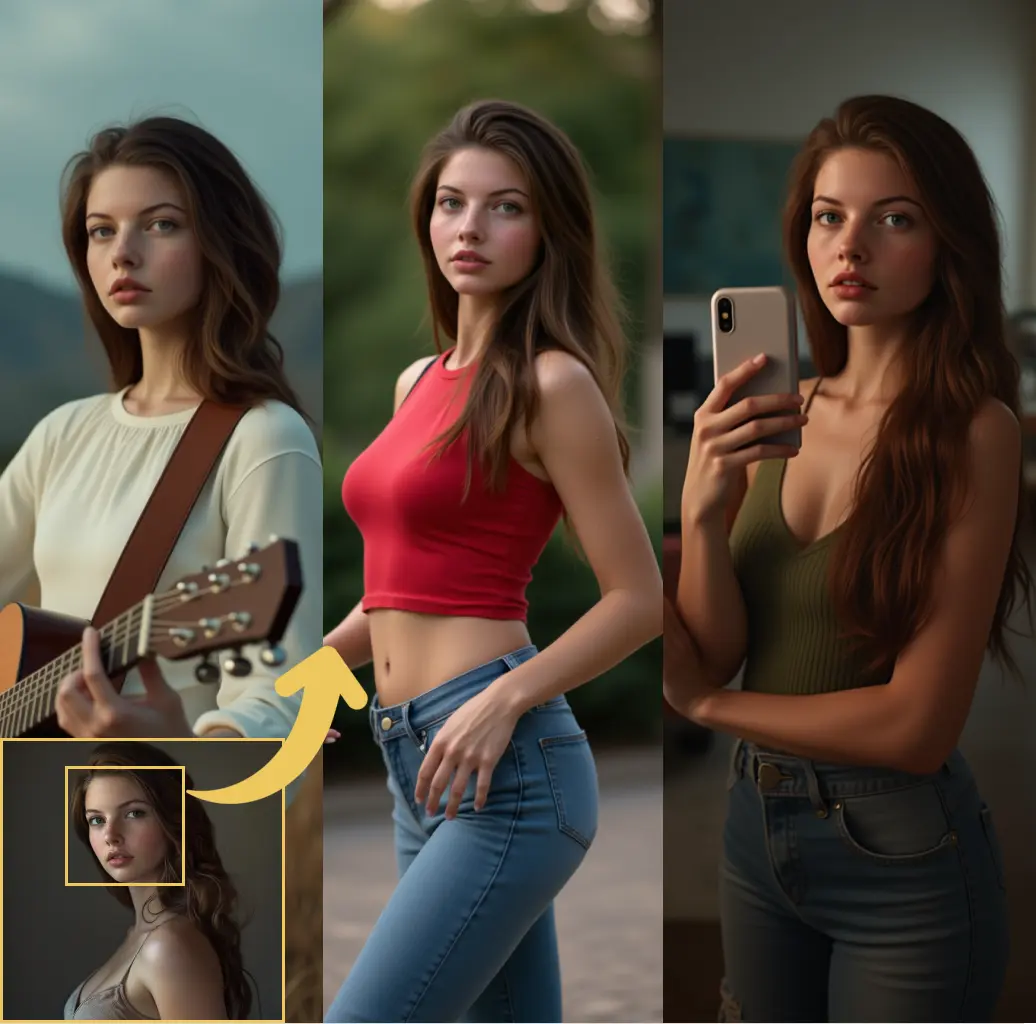ComfyUI Node: ConditionTextMulti
ConditionTextMulti
CategoryChibi-Nodes/Text
chibiace (Account age: 3134days) Extension
ComfyUI-Chibi-Nodes Latest Updated
2025-03-18 Github Stars
0.07K
How to Install ComfyUI-Chibi-Nodes
Install this extension via the ComfyUI Manager by searching for ComfyUI-Chibi-Nodes- 1. Click the Manager button in the main menu
- 2. Select Custom Nodes Manager button
- 3. Enter ComfyUI-Chibi-Nodes in the search bar
Visit ComfyUI Online for ready-to-use ComfyUI environment
- Free trial available
- 16GB VRAM to 80GB VRAM GPU machines
- 400+ preloaded models/nodes
- Freedom to upload custom models/nodes
- 200+ ready-to-run workflows
- 100% private workspace with up to 200GB storage
- Dedicated Support
ConditionTextMulti Description
Enhances text conditioning with multiple inputs for nuanced AI model guidance and refined image generation.
ConditionTextMulti:
The ConditionTextMulti node is designed to enhance the text conditioning process by allowing multiple text inputs to be processed simultaneously. This node is particularly useful for AI artists who want to provide multiple prompts or descriptions to guide the AI model in generating more nuanced and detailed outputs. By leveraging the capabilities of the CLIP model, ConditionTextMulti tokenizes and encodes multiple text inputs, combining them into a single conditioning output that can be used to influence the diffusion model. This approach enables more complex and rich text-based conditioning, leading to more refined and accurate image generation.
ConditionTextMulti Input Parameters:
clip
The clip parameter represents the CLIP model used for encoding the text inputs. This model is responsible for tokenizing and encoding the provided text into a format that can be used for conditioning the diffusion model. The CLIP model is essential for transforming textual descriptions into meaningful embeddings that guide the image generation process.
first
The first parameter is a string input representing the first text prompt. This text will be tokenized and encoded by the CLIP model. Providing a meaningful and descriptive text prompt here can significantly influence the resulting image generation.
second
The second parameter is a string input representing the second text prompt. Similar to the first parameter, this text will be tokenized and encoded by the CLIP model. Using multiple text prompts allows for more detailed and nuanced conditioning.
third
The third parameter is a string input representing the third text prompt. This text will also be tokenized and encoded by the CLIP model. Including additional text prompts can help in achieving more complex and refined conditioning.
fourth
The fourth parameter is a string input representing the fourth text prompt. This text will be tokenized and encoded by the CLIP model. Providing multiple text prompts can enhance the richness and detail of the conditioning output.
ConditionTextMulti Output Parameters:
clip
The clip output is the same CLIP model that was used for encoding the text inputs. This output can be used for further processing or for chaining with other nodes that require the CLIP model.
conditioning
The conditioning output is a list containing the encoded text prompts and their associated pooled outputs. This conditioning output is used to guide the diffusion model in generating images that align with the provided text descriptions. The conditioning output combines the encoded representations of all the text inputs, resulting in a more comprehensive and detailed conditioning.
ConditionTextMulti Usage Tips:
- Use descriptive and detailed text prompts in the
first,second,third, andfourthparameters to achieve more nuanced and accurate conditioning. - Experiment with different combinations of text prompts to see how they influence the generated images. Combining complementary or contrasting descriptions can lead to interesting and unique results.
- Ensure that the CLIP model provided in the
clipparameter is compatible with the text inputs and the desired output format.
ConditionTextMulti Common Errors and Solutions:
"Text input is empty"
- Explanation: One or more of the text input parameters (
first,second,third,fourth) are empty. - Solution: Ensure that all text input parameters contain valid and meaningful text prompts. Avoid leaving any text input parameter empty.
"CLIP model not provided"
- Explanation: The
clipparameter is missing or not properly specified. - Solution: Provide a valid CLIP model in the
clipparameter to ensure the text inputs can be tokenized and encoded correctly.
"Tokenization failed"
- Explanation: The text inputs could not be tokenized by the CLIP model.
- Solution: Verify that the text inputs are in a format compatible with the CLIP model. Ensure that the text is properly formatted and free of unsupported characters.
"Encoding failed"
- Explanation: The CLIP model encountered an error while encoding the text inputs.
- Solution: Check the compatibility of the CLIP model with the provided text inputs. Ensure that the CLIP model is correctly loaded and functioning as expected.
ConditionTextMulti Related Nodes
RunComfy is the premier ComfyUI platform, offering ComfyUI online environment and services, along with ComfyUI workflows featuring stunning visuals. RunComfy also provides AI Playground, enabling artists to harness the latest AI tools to create incredible art.



